Last Updated on July 21, 2021
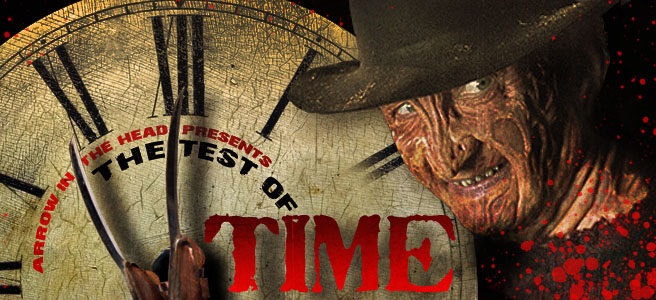
We all have certain movies we love. Movies we respect without question because of either tradition, childhood love, or because they’ve always been classics. However, as time keeps ticking, do those classics still hold up? Do they remain must see? So…the point of this column is to determine how a film holds up for a modern horror audience, to see if it stands the Test of Time.
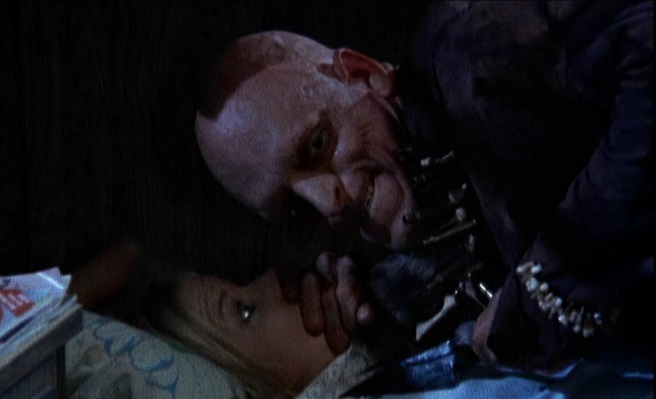
Director: Wes Craven
Starring: Dee Wallace, Michael Berryman, Virginia Vincent, Robert Houston, Martin Speer
40 years is an awful lot of time to potentially tarnish a film. Yet, for the late great Wes Craven and his seminal cannibal scourge THE HILLS HAVE EYES, said four decades have actually bolstered the title through a series of curios updates: a wildly misguided sequel (1985), a superlative remake (2006) and the insipid sequel of the remake (2007). But the question remains, despite remaining a relevant name in the pop-culture lexicon of modern day horror films, how does the original still stack up? After-all, THE HILLS HAVE EYES was just Craven’s second feature film (excluding the X-rated THE FIREWORKS WOMAN), shot on location in Apple Valley, California for a measly $230,000 with a relatively unknown cast. The odds would seem to be long for any sort of lasting longevity, right?! Has the movie merely been skating by on the namesake of its venerated director? We shall see below, as THE HILLS HAVE EYES is officially put to The Test of Time!
UNDER EXAMINATION: THE HILLS HAVE EYES
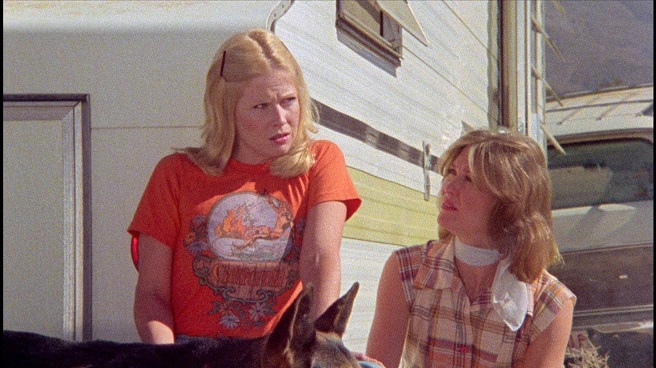
“Jaws was just pop horror. What I have here is real horror. It’s rip that baby in half.” – Wes Craven
THE STORY: Acrid, barren, waterless, unaccommodating of most life-forms…it’s fascinating how Wes Craven chose the desert setting to tell his horrific fish out of water story. Indeed, THE HILLS HAVE EYES tells the story of the Carters – Big Bob, Ethel, Bobby, Brenda, Lynne, Lynne’s hubby Doug – an idyllic American family unit en route from Ohio to California to enjoy a sunny vacation. Crossing country in their trusty RV, the Carters make a stop in the Nevadan desert, not too far from area 51, in order to fuel-up and reroute their direction. However, getting back on the road isn’t so easy. As the Carters try to drive away, one of their tires is shot out and the RV comes crashing to a halt. Now stranded in the middle of nowhere, square in a military testing airfield, the Carters and their two German Shepherds (Beauty and Beast) are soon stalked, preyed upon and lethally tormented by a feral clan of howling, hill-dwelling cannibal mutants…all of whom go by a planetary nickname…Mercury, Mars, Jupiter, Pluto, etc.
As each Carter family member is accosted, one by one, they must band together and mount a counterstrike in order to quash the rapacious advances of the murderous mountain-men.
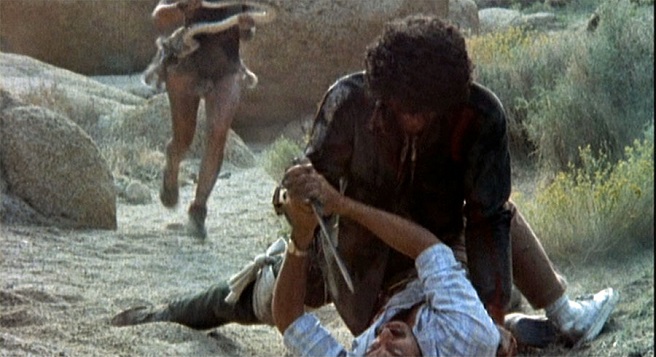
That said, it’s worth noting, per an IMDB trivia entry:
The movie is based on the legend of Sawney Beane and his family (a wife, eight sons and six daughters), a feral clan who inhabited and roamed the highlands of Scotland’s East Lothian County, near Edinburgh, in the early 1400s. They captured, tormented and ate several transients. They were eventually captured on the order of Scotland’s King James, were judged to be insane, and executed without trial. The executions of the Beane clan all allegedly involved grotesque tortures, inspiring the aspect of the film that the Carter family become as brutal as their attackers when they seek revenge.
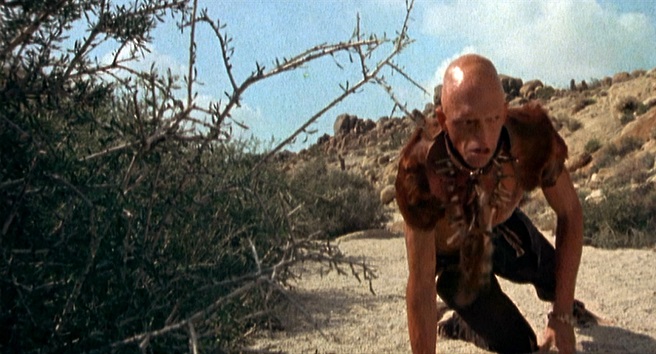
WHAT HOLDS UP: The structural integrity of THE HILLS HAVE EYES is buoyed by a number of pillars, but to our minds, there are three that really hold the most weight. One deals with the social subtext, another with the abject terror of physical abuse, and the last with pure performance. Let’s explain…
Perhaps the strongest and most lasting aspect of THE HILLS HAVE EYES is what a social statement Craven made. Clearly rebuking government negligence and the land usage of the military to conduct experiments is something Craven set out to touch upon when penning the screenplay. The villainous hill-people in the film can be directly attributed to the egregious pollution, radiation and consequential mutation left in the wake of military test-bombing and the like. Craven is clearly lambasting the malfeasance of the government, how it directly led to the creation of a race of enfeebled miscreants relegated to living off the land like tribal natives. War regresses the human race, it doesn’t progress it…this seems to be the most trenchant argument Craven is making here. 40 years and how many uncountable wars later? The message is still salient.
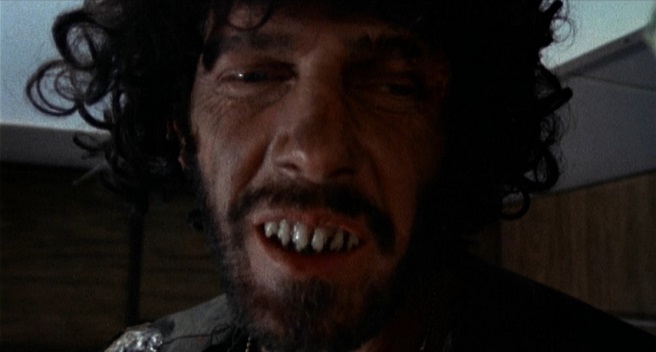
Granted, the sheer intensity was ramped up a notch by Alexandre Aja in his faithful 2006 redo, but damn, in terms of the abject terror in THE HILLS HAVE EYES, the nasty rape and incendiary crucifixion sequence still holds up quite well in the original. And I think the reason is how it’s crosscut in tandem. Remember, the fiery nail-to-the-cross action of Big Bob was conceived as distraction by the hill-gang, meant to call attention to the remaining family members while Mars and Pluto slink into the RV to ransack the family’s possessions. Of course, Mars takes a lot more! The volleying back and forth between Bob being nailed with wooden stakes, torched alive and left smoldering on the desert sand and the brutally relentless (however brief) raping of Brenda is where the movie is at its most dynamically violent. It all comes to head right here, a culminating apogee of insane action. Two people get shot in the RV, Mars gets stabbed in the leg. Severe blood is drawn. Utter hysteria rings loudly.
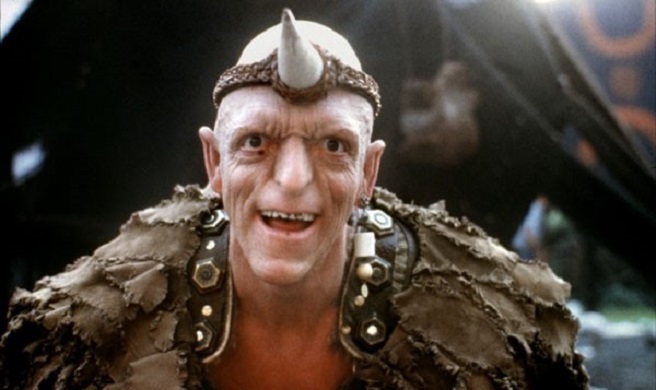
Not to overstate it, but good god, the introduction of Michael Berryman in THE HILLS HAVE EYES is one that’s paid supreme dividends over the decades. Seriously! Whether it’s him poking fun at his own image in WEIRD SCIENCE, or embracing his role as Pluto at various horror conventions, we’re damn glad Craven cast this dude way back in 1977. In terms of the film itself, no one better exemplifies the sheer raw, rough hewn authenticity than Berryman does. It’s as if Craven actually went and found himself a maniacal mountain-man. No actor, the genuine article. What he brings to the film in this capacity can’t be quantified. But in terms of an original villain who comes off believably, few have done it better than Mr. Michael Berryman as Pluto.
WHAT BLOWS NOW: To hear our man Ryan Doom put, as he did a few years back via The F*ckin Black Sheep, almost all of THE HILLS HAVE EYES blows harder than a January nor’easter. While it’s a stance we respect, we can’t entirely agree. That said, there are a few undeniable facets of THE HILLS HAVE EYES that have suffered some wear and tear of the last 40 years. And honestly, most of them are technical.
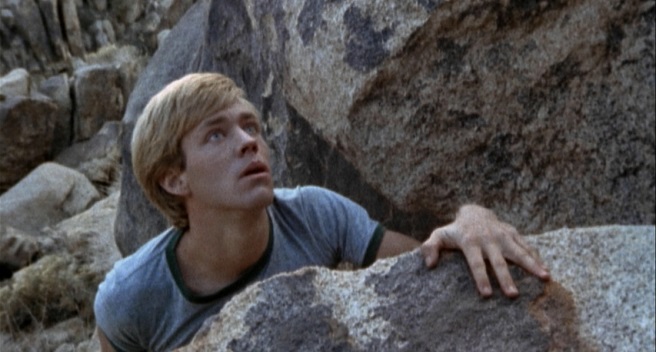
Shot on 16mm film stock back in 1977 for less than $250,000, there’s a degraded quality to the look of the film that, even when transferred to Blu-ray, appears a bit beat up. Now, I’ll argue till I’m blue in the face that certain films actually benefit from the scratch and grain of the low-fi film stock. THE TEXAS CHAINSAW MASSACRE, which Craven is on record as paying homage to with HILLS, is the chief example of a movie that actually worsens with digital cleanup. Now I won’t go that far with THE HILLS HAVE EYES since there are even more hard-to-view night-scenes than in CHAINSAW. Still, the sheer technical quality of THE HILLS HAVE EYES is one that hasn’t aged particularly well.
Same goes for some of the film’s pacing. There are a few deathly slow stretched in the film, many of which play as mere stopgaps between violent set-pieces. There’s a sequence in the beginning that drags a bit, as does a slogging stint in the final third. This is actually one of the areas of the film where the remake improved on the original. Aja was able to nix the slow stretches in the first and third acts and make the overall experience a bit snappier.
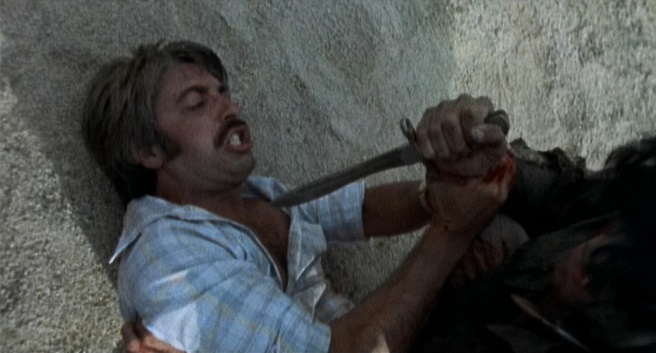
Another minor gripe is the amateurish acting many of the supporting players can’t escape from. On one hand I still really dig the turns from Dee Wallace as Lynne and Robert Houston as Bobby, but then there’s Martin Speer’s work as Doug, which comes across as thoroughly unconvincing. Same goes for a few of the ancillary hill people, Ruby (Janus Blythe) and the mute Mercury (producer Pete Locke), in specific.
THE VERDICT: Love it or loathe it, there’s a reason why THE HILLS HAVE EYES has remained so popular over the past 40 years. Not only did the movie boast the raw, unvarnished talents of Wes Craven, a man who would go on to secure a place among the Mount Rushmore of horror filmmakers, it was assembled on no less than a three-pronged foundation. The social commentary about the irresponsibility of military bomb-testing is one, the nastily conducted barrage of violence in the middle of the film (rape and crucifixion) another, and the introduction of the great Michael Berry the final. 40 years on and yes, there’s a still a lot of shine in THE HILLS HAVE EYES!
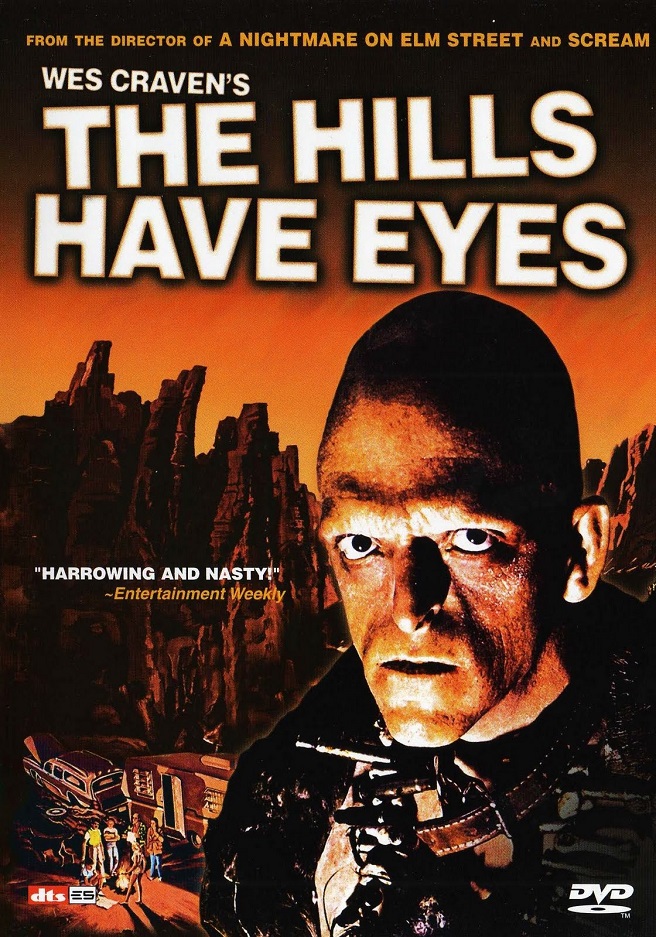









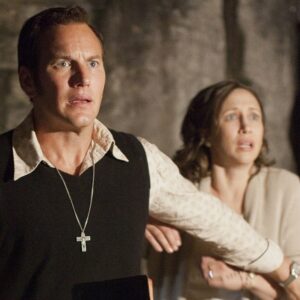

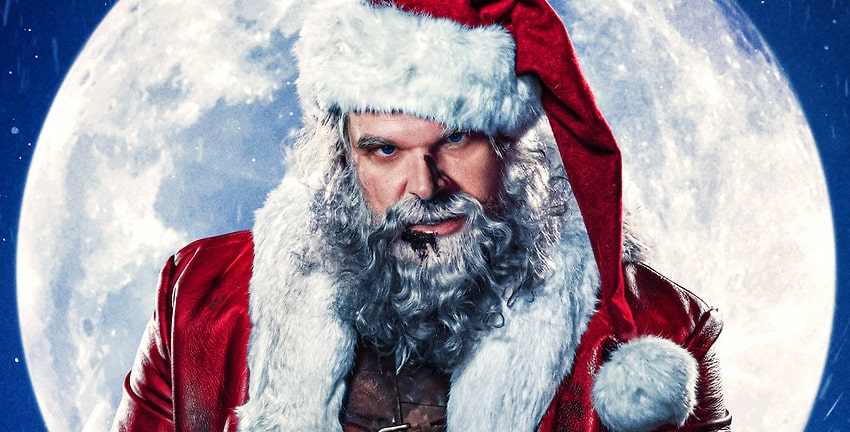

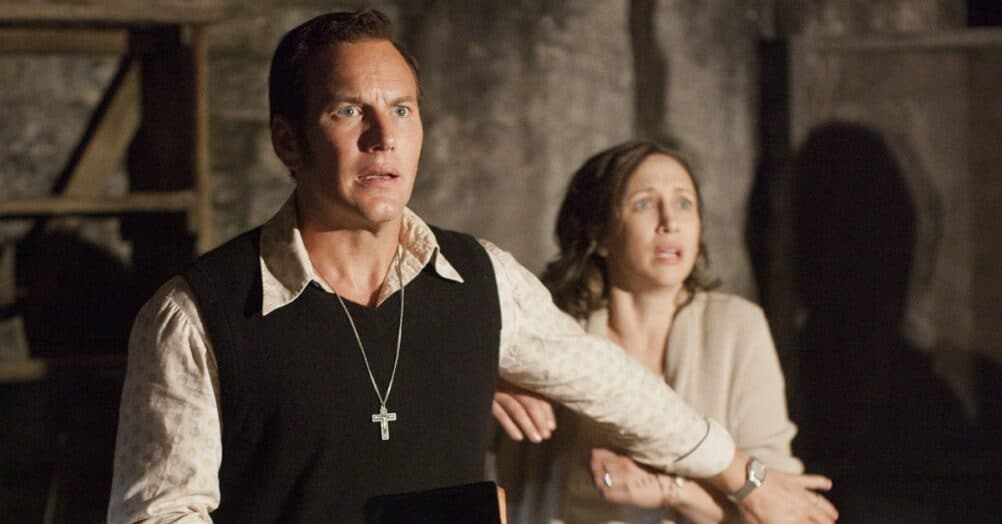






Follow the JOBLO MOVIE NETWORK
Follow us on YOUTUBE
Follow ARROW IN THE HEAD
Follow AITH on YOUTUBE